Stefan Zachow
Landmark-free Statistical Shape Modeling via Neural Flow Deformations
Sep 14, 2022

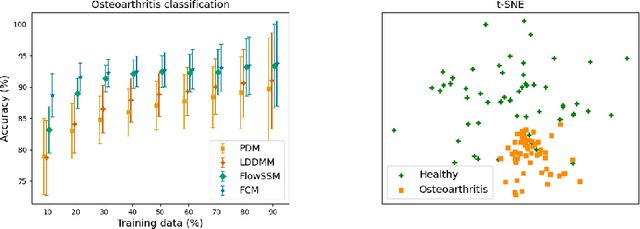

Abstract:Statistical shape modeling aims at capturing shape variations of an anatomical structure that occur within a given population. Shape models are employed in many tasks, such as shape reconstruction and image segmentation, but also shape generation and classification. Existing shape priors either require dense correspondence between training examples or lack robustness and topological guarantees. We present FlowSSM, a novel shape modeling approach that learns shape variability without requiring dense correspondence between training instances. It relies on a hierarchy of continuous deformation flows, which are parametrized by a neural network. Our model outperforms state-of-the-art methods in providing an expressive and robust shape prior for distal femur and liver. We show that the emerging latent representation is discriminative by separating healthy from pathological shapes. Ultimately, we demonstrate its effectiveness on two shape reconstruction tasks from partial data. Our source code is publicly available (https://github.com/davecasp/flowssm).
Rigid Motion Invariant Statistical Shape Modeling based on Discrete Fundamental Forms
Nov 05, 2021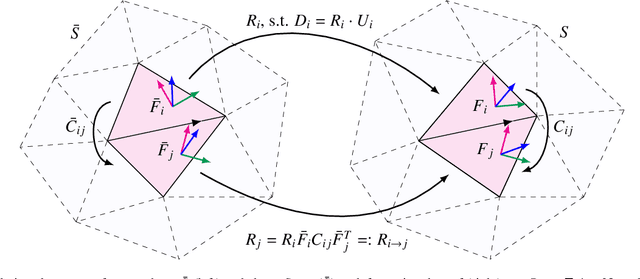


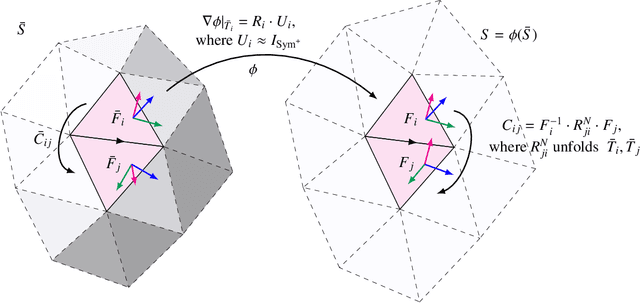
Abstract:We present a novel approach for nonlinear statistical shape modeling that is invariant under Euclidean motion and thus alignment-free. By analyzing metric distortion and curvature of shapes as elements of Lie groups in a consistent Riemannian setting, we construct a framework that reliably handles large deformations. Due to the explicit character of Lie group operations, our non-Euclidean method is very efficient allowing for fast and numerically robust processing. This facilitates Riemannian analysis of large shape populations accessible through longitudinal and multi-site imaging studies providing increased statistical power. Additionally, as planar configurations form a submanifold in shape space, our representation allows for effective estimation of quasi-isometric surfaces flattenings. We evaluate the performance of our model w.r.t. shape-based classification of hippocampus and femur malformations due to Alzheimer's disease and osteoarthritis, respectively. In particular, we outperform state-of-the-art classifiers based on geometric deep learning as well as statistical shape modeling especially in presence of sparse training data. We evaluate the performance of our model w.r.t. shape-based classification of pathological malformations of the human knee and show that it outperforms the standard Euclidean as well as a recent nonlinear approach especially in presence of sparse training data. To provide insight into the model's ability of capturing biological shape variability, we carry out an analysis of specificity and generalization ability.
Geodesic B-Score for Improved Assessment of Knee Osteoarthritis
Mar 12, 2021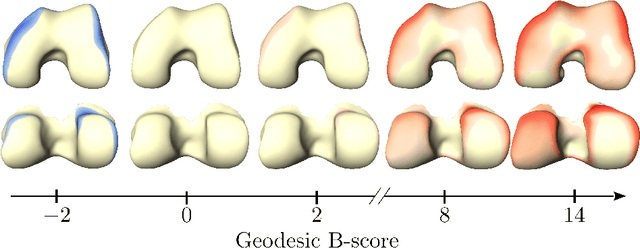
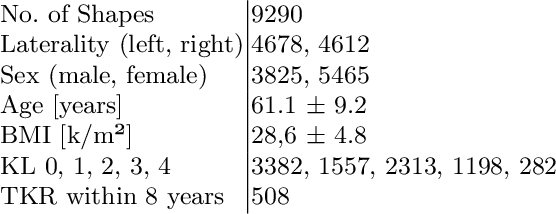
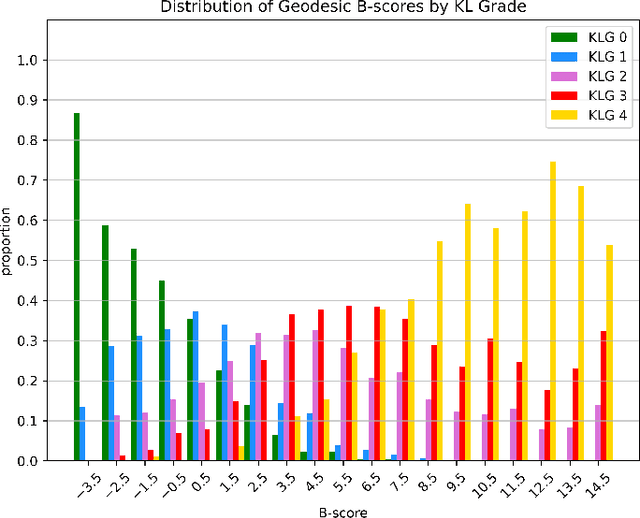
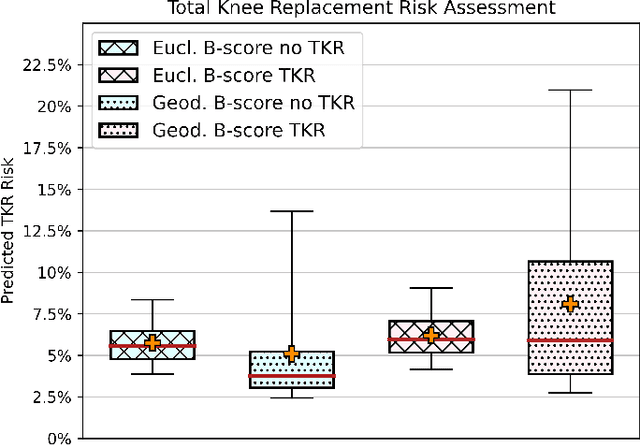
Abstract:Three-dimensional medical imaging enables detailed understanding of osteoarthritis structural status. However, there remains a vast need for automatic, thus, reader-independent measures that provide reliable assessment of subject-specific clinical outcomes. To this end, we derive a consistent generalization of the recently proposed B-score to Riemannian shape spaces. We further present an algorithmic treatment yielding simple, yet efficient computations allowing for analysis of large shape populations with several thousand samples. Our intrinsic formulation exhibits improved discrimination ability over its Euclidean counterpart, which we demonstrate for predictive validity on assessing risks of total knee replacement. This result highlights the potential of the geodesic B-score to enable improved personalized assessment and stratification for interventions.
Simulation-to-Real domain adaptation with teacher-student learning for endoscopic instrument segmentation
Mar 02, 2021



Abstract:Purpose: Segmentation of surgical instruments in endoscopic videos is essential for automated surgical scene understanding and process modeling. However, relying on fully supervised deep learning for this task is challenging because manual annotation occupies valuable time of the clinical experts. Methods: We introduce a teacher-student learning approach that learns jointly from annotated simulation data and unlabeled real data to tackle the erroneous learning problem of the current consistency-based unsupervised domain adaptation framework. Results: Empirical results on three datasets highlight the effectiveness of the proposed framework over current approaches for the endoscopic instrument segmentation task. Additionally, we provide analysis of major factors affecting the performance on all datasets to highlight the strengths and failure modes of our approach. Conclusion: We show that our proposed approach can successfully exploit the unlabeled real endoscopic video frames and improve generalization performance over pure simulation-based training and the previous state-of-the-art. This takes us one step closer to effective segmentation of surgical tools in the annotation scarce setting.
Endo-Sim2Real: Consistency learning-based domain adaptation for instrument segmentation
Jul 22, 2020
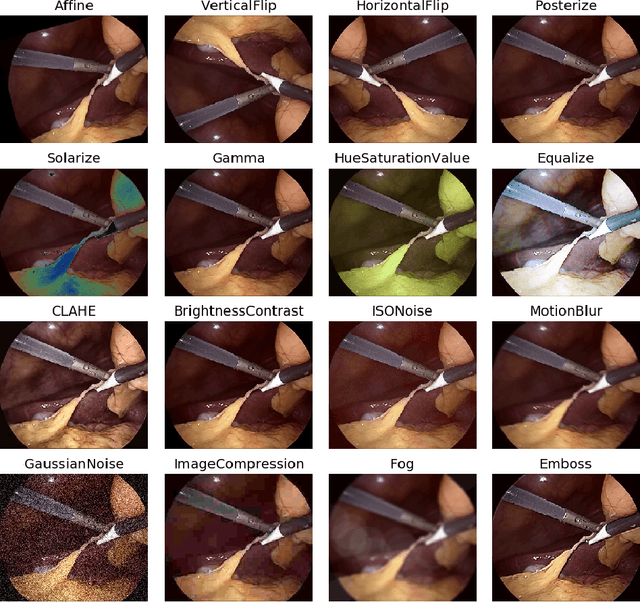
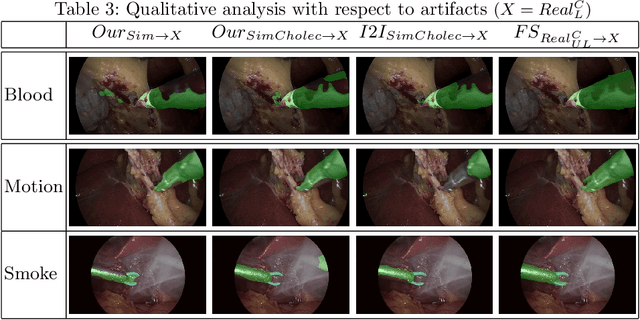

Abstract:Surgical tool segmentation in endoscopic videos is an important component of computer assisted interventions systems. Recent success of image-based solutions using fully-supervised deep learning approaches can be attributed to the collection of big labeled datasets. However, the annotation of a big dataset of real videos can be prohibitively expensive and time consuming. Computer simulations could alleviate the manual labeling problem, however, models trained on simulated data do not generalize to real data. This work proposes a consistency-based framework for joint learning of simulated and real (unlabeled) endoscopic data to bridge this performance generalization issue. Empirical results on two data sets (15 videos of the Cholec80 and EndoVis'15 dataset) highlight the effectiveness of the proposed \emph{Endo-Sim2Real} method for instrument segmentation. We compare the segmentation of the proposed approach with state-of-the-art solutions and show that our method improves segmentation both in terms of quality and quantity.
Shape-aware Surface Reconstruction from Sparse 3D Point-Clouds
Feb 15, 2017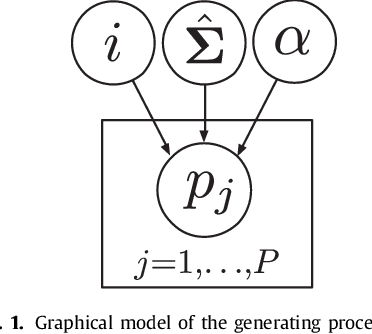
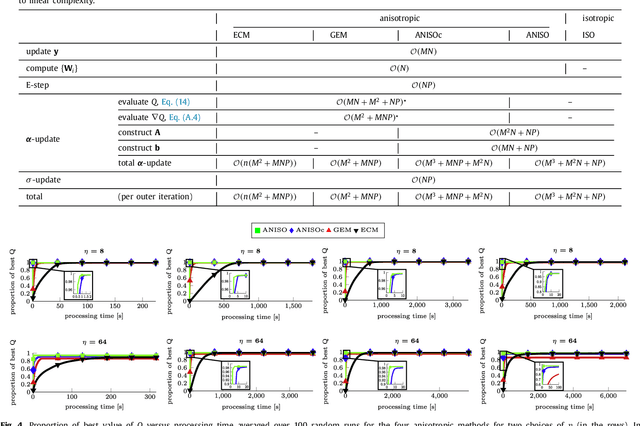

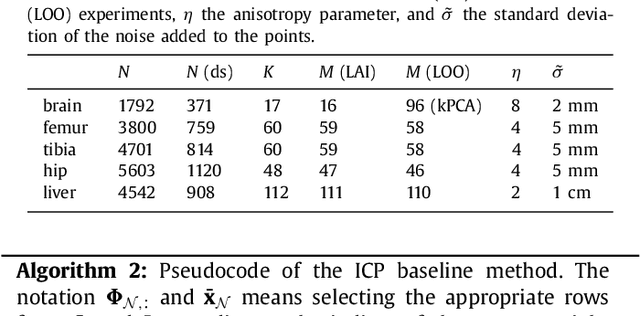
Abstract:The reconstruction of an object's shape or surface from a set of 3D points plays an important role in medical image analysis, e.g. in anatomy reconstruction from tomographic measurements or in the process of aligning intra-operative navigation and preoperative planning data. In such scenarios, one usually has to deal with sparse data, which significantly aggravates the problem of reconstruction. However, medical applications often provide contextual information about the 3D point data that allow to incorporate prior knowledge about the shape that is to be reconstructed. To this end, we propose the use of a statistical shape model (SSM) as a prior for surface reconstruction. The SSM is represented by a point distribution model (PDM), which is associated with a surface mesh. Using the shape distribution that is modelled by the PDM, we formulate the problem of surface reconstruction from a probabilistic perspective based on a Gaussian Mixture Model (GMM). In order to do so, the given points are interpreted as samples of the GMM. By using mixture components with anisotropic covariances that are "oriented" according to the surface normals at the PDM points, a surface-based fitting is accomplished. Estimating the parameters of the GMM in a maximum a posteriori manner yields the reconstruction of the surface from the given data points. We compare our method to the extensively used Iterative Closest Points method on several different anatomical datasets/SSMs (brain, femur, tibia, hip, liver) and demonstrate superior accuracy and robustness on sparse data.
Tool and Phase recognition using contextual CNN features
Oct 27, 2016


Abstract:A transfer learning method for generating features suitable for surgical tools and phase recognition from the ImageNet classification features [1] is proposed here. In addition, methods are developed for generating contextual features and combining them with time series analysis for final classification using multi-class random forest. The proposed pipeline is tested over the training and testing datasets of M2CAI16 challenges: tool and phase detection. Encouraging results are obtained by leave-one-out cross validation evaluation on the training dataset.
 Add to Chrome
Add to Chrome Add to Firefox
Add to Firefox Add to Edge
Add to Edge